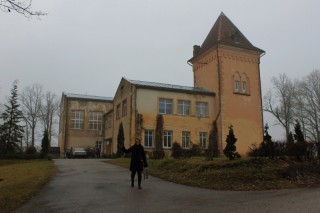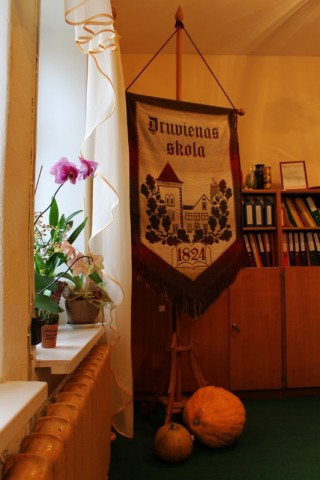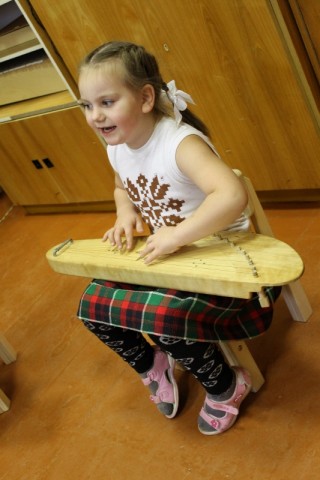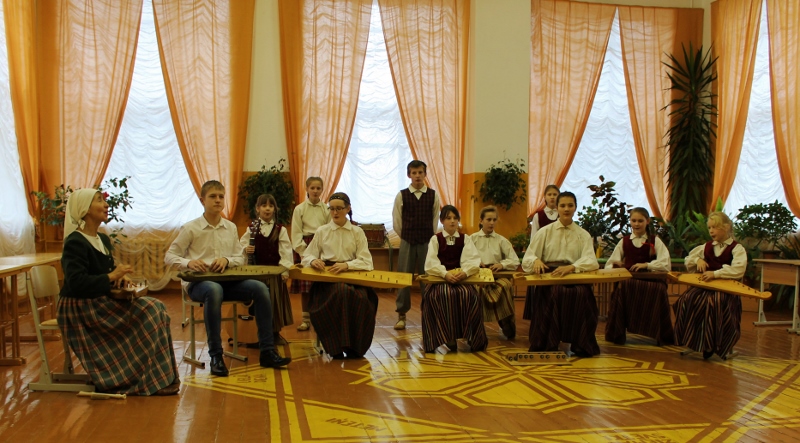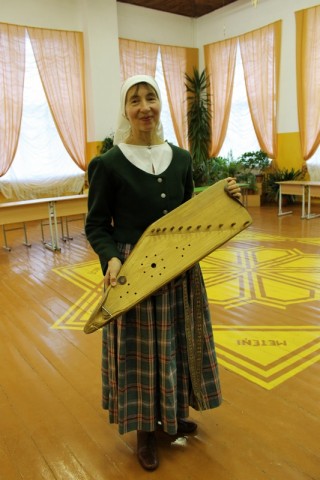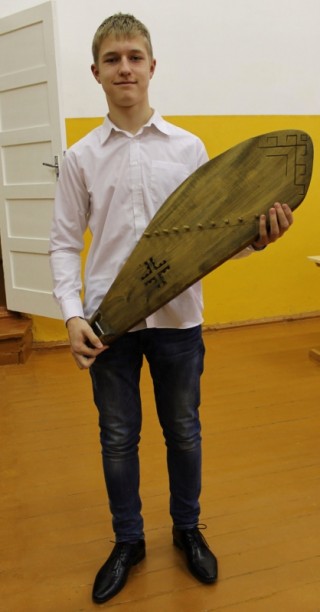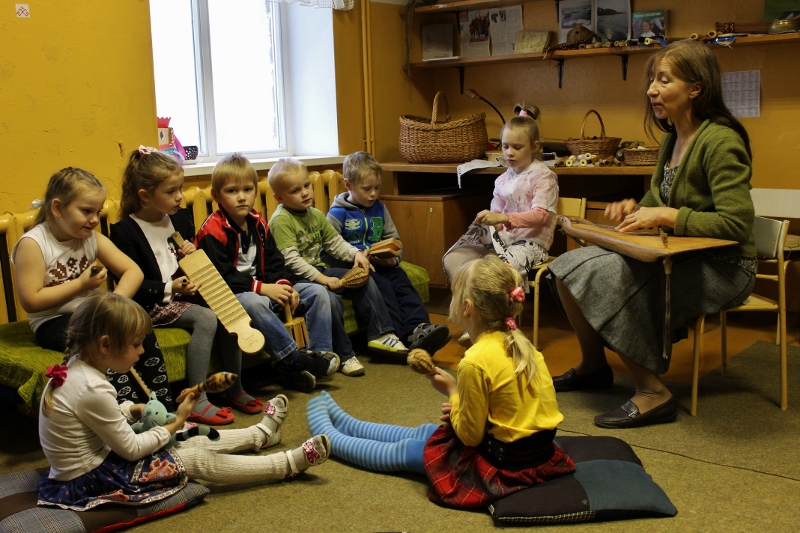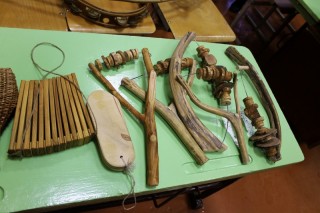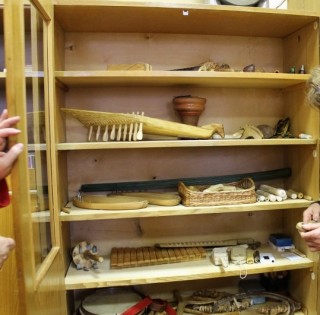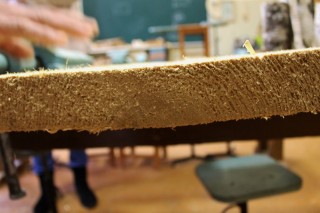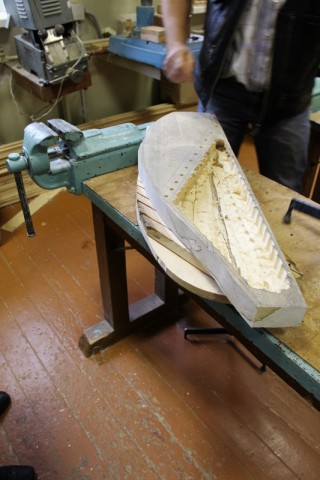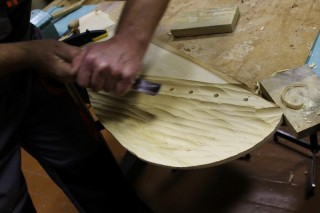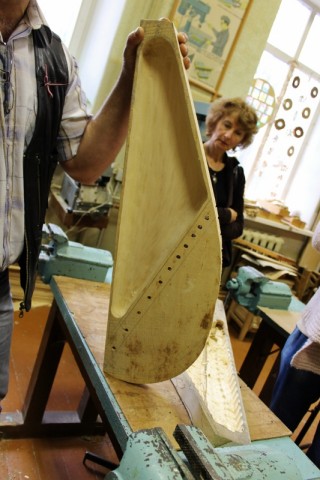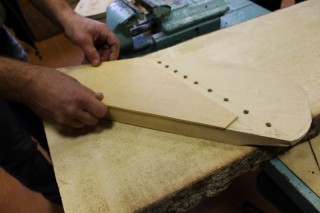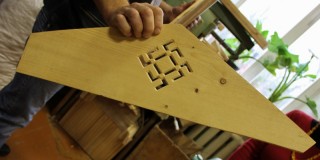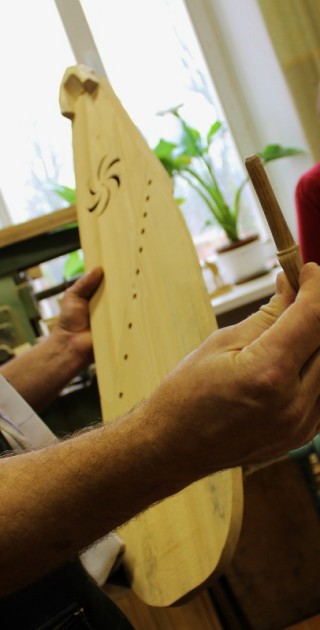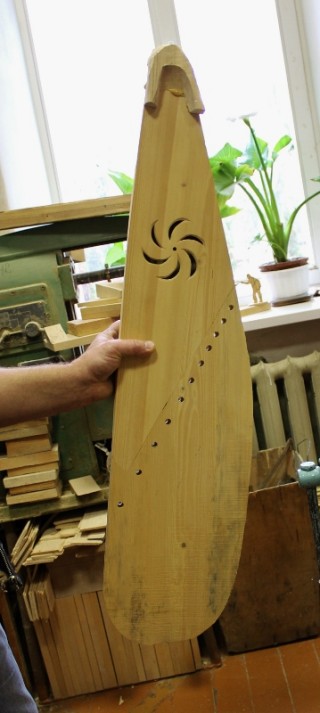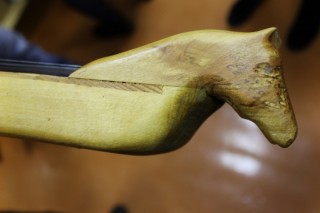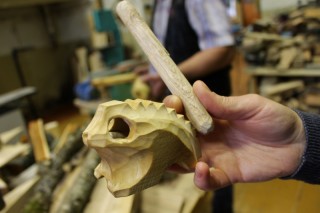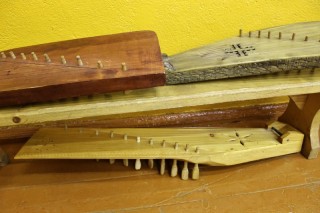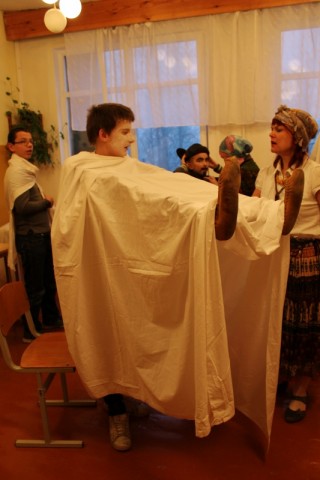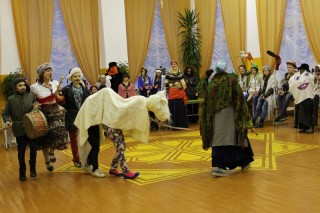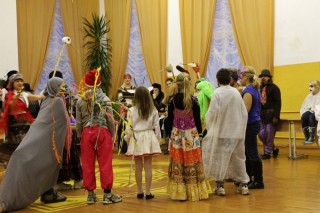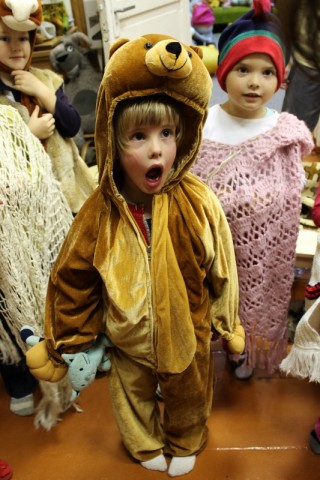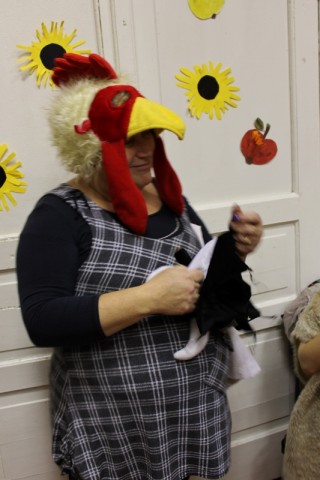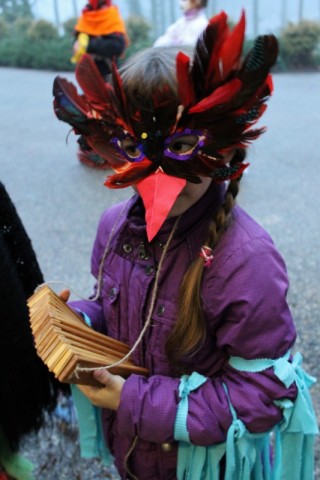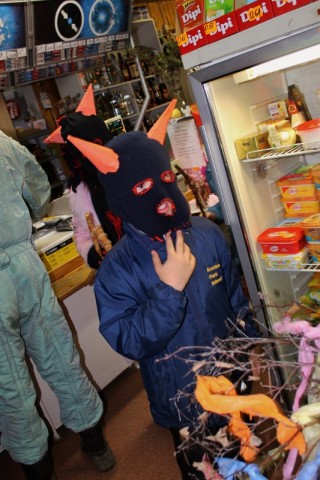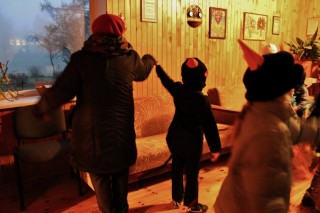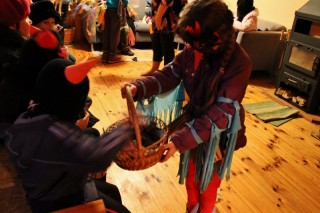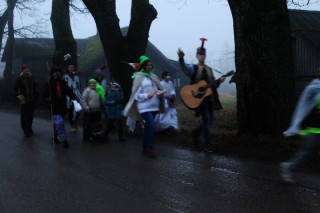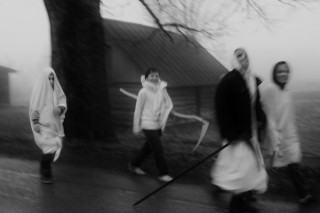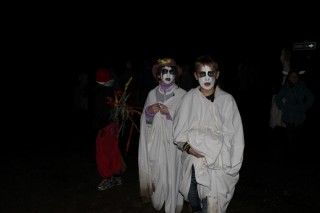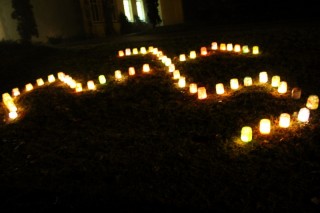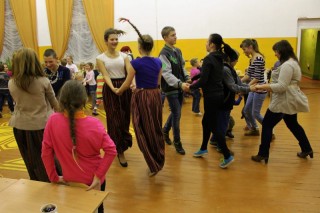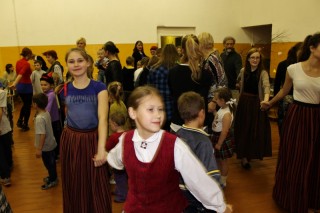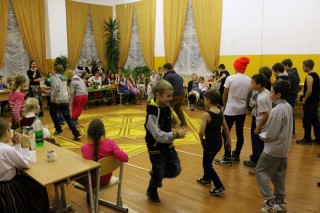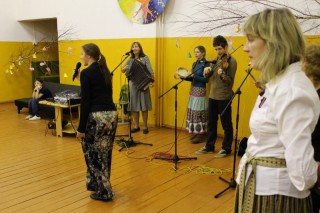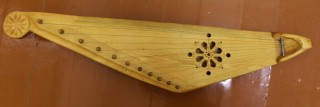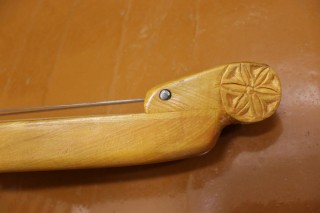A Kokle – Visiting the school of Druviena in Latvia, November 2014
Blog
January 09, 2015
In November 2014 I got the opportunity to follow the folk tradition and folk music education at the school of Druviena in Latvia. The journey was an unforgettable experience full of wonderful concerts, and as well children’s as professional musician’s thrilling performances. We visited some local luthiers and got to know especially the work of the master luthier Viktors Černoglazovs who also acts as the woodwork teacher at the school of Druviena.
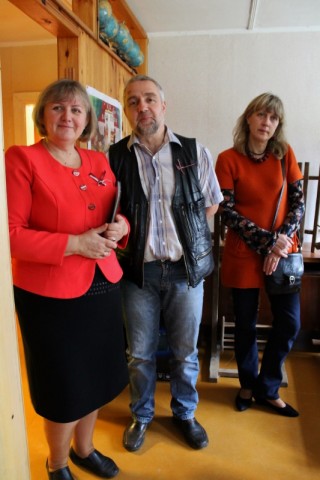
Velga Černoglazova (left), the headmaster of the school; her husband, the master luthier Viktors Černoglazovs; and the music teacher Liga Klavina
The folk tradition and folk music education proceeded systematically from the early education to the higher levels. There were lots of inspirational and imagination stimulating self made percussions in use, as well as beautiful kokles made in the traditional way at the school. We were lucky to have the opportunity to follow how Mrs. Dace Vitola familiarized the small children with folkmusic by combining the songs and improvisations with a fairytale. It was also very instructive to see how Mrs. Liga Klavina taught the kokle to children under schoolage as well as to older children. The taught tunes were coherently from the Latvian tradition, and even the special happenings at the school were organized according to the old, traditional annual calendar which was also painted on the floor of the hall. Under the direction of the wonderful Dace Vitola, the kokle group of the school performed a beautiful wellcoming concert for us with their self made kokles.
The school is also very active in organizing workshops about traditional handicraft like pottery, weaving, making soap or weaving baskets, for example. In the guidance of Viktors Černoglazovs the instrument building workshops are organized, as well.
One evening the children and the people of the village organized a traditional celebration of the autumn: the children were wearing different costumes and walked through the village visiting houses dancing and singing, for which they were payed with some goodies and cakes. Afterwards the people gathered at the school and danced and had fun together all evening.
Most of the Latvian kokles I’ve seen have the wing, the wooden plate continuing on the other side of the tuning pegs. In the region of Kurzeme the kokles have also been built without the wing, though. As it happened, Viktors Černoglazovs had one ready made kokle like Kurzeme tradition. He had made it some time ago from an old, storm damaged linden (the front plate of spruce).
In addition to its beautiful appearance, I was also fascinated by its magical timbre, and so I deceded to buy the instrument.
As a contrast to the Finnish kanteles, the narrow ponsi and the very dense layout of the strings at the ponsi-part, indicate that the instrument is planned to be played with the strumming or the mixed technique. As I mainly play with the plucking technique, to lift the support of the right hand palm away from the ponsi was a kind of issue for me. As I played the instrument on my lap, I was able to support the right arm somewhat on the edge of the ponsi, and that helped the technique. Playing on the table or on the floor, as I most often do, is easiest when the instrument is supported on the surface with the wedges (and the reusable adhesive, for example). Thus the plucking will get easier and the wrists will be in natural and relaxed position. Here is my familiarization play on the kokle with the theme of 3 : 2. At the beginning the left hand has 2 beats and the right hand 3 ( + 4 beats in the turn). Later the right hand thumb moves on the lower strings to pluck the mellow and round melody tones from the middle of the strings, and alternates between the 3 and 2 beat phrases. Somewhere in the middle of the song the fingernail strokes are used, familiar from the Karelian late 19th and early 20th century Ripatska-tunes. From there I move back to the old plucking technique where the fast right and left hand plucks are alternating.
I had my 5-string Ontrei Malinen replica with me in Latvia, and perhaps one reason for my enchantment was that the kokle and my bronze string kantele sounded so amazing together. The 5-string kantele is tuned in G-major (the first string in G3, but about 20-30 cent higher as the A4=442 Hz). The tuning of the kokle from the lowest string: G3, A3, C4, D4, F4, G4, A4, B4, C5, D5. The vibrating length of the longest string in the kokle is about 675 mm, and the shortest about 305 mm. At the moment the kokle has steel strings, but I might try some brass and bronze strings on it some time in the future. 🙂

